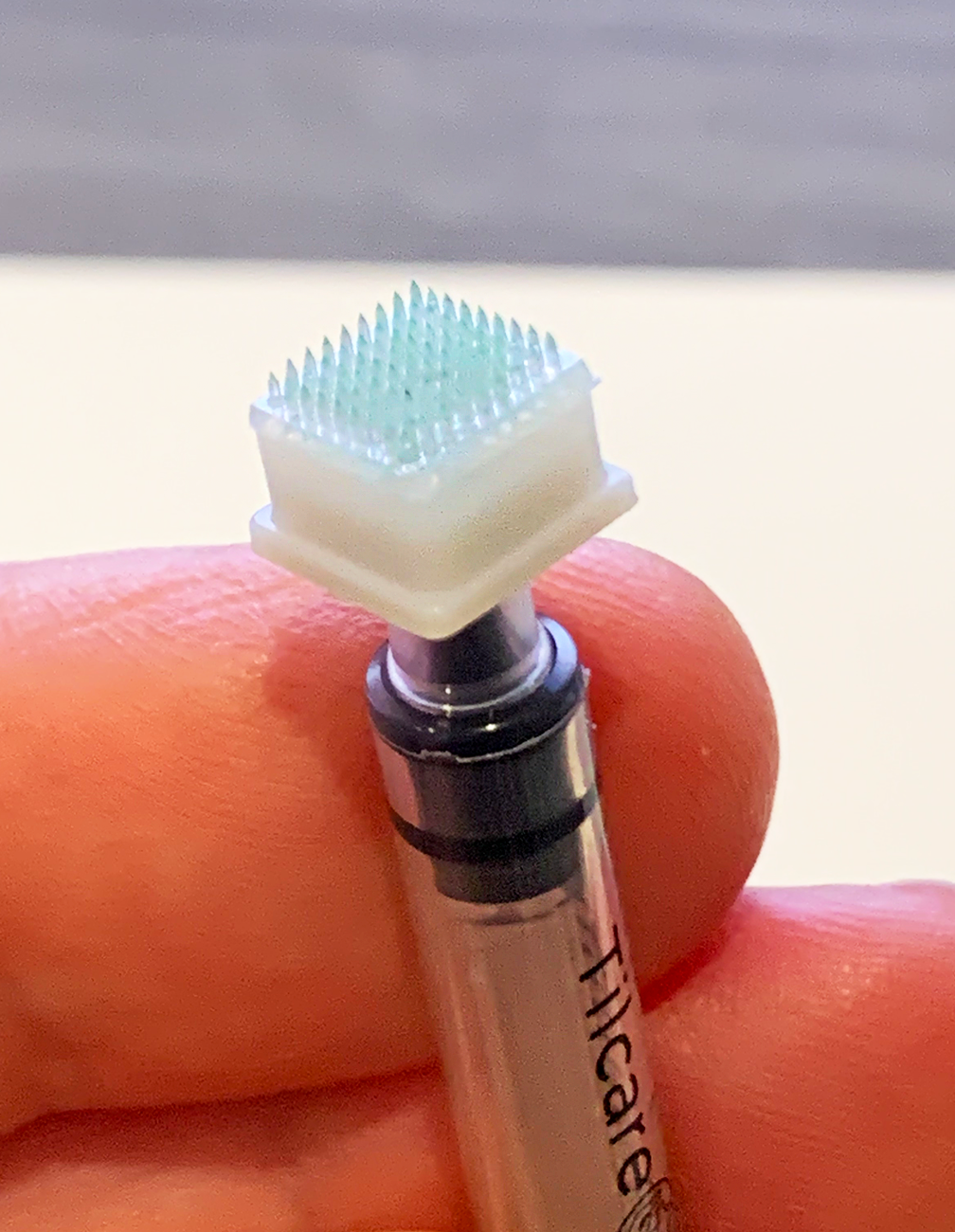Improving a vaccine delivery system for COVID and beyond
A grant from the Richard King Mellon Foundation is helping researchers to develop and test a new hybrid microneedle array platform capable of delivering vaccines directly into the skin. The platform can have an impact on COVID-19 vaccination in the developing world.
Researchers at Carnegie Mellon University College of Engineering and the University of Pittsburgh School of Medicine have been awarded a grant from the Richard King Mellon Foundation to develop and test a new microneedle array platform capable of delivering vaccines directly into the skin, with the particular goal of improving COVID-19 vaccination in the developing world.

Source: Burak Ozdoganlar, College of Engineering
Fabricated-Hybrid-Microneedle-Arrays attached to a syringe with an adaptor. The dissolvable tips are indicated with a green dye.
The work is led by Burak Ozdoganlar, professor of mechanical engineering at CMU and associate director of the Engineering Research Accelerator, and Paul Duprex, director of Pitt’s Center for Vaccine Research. The research will specifically focus on effective intradermal delivery of live-attenuated virus-based COVID-19 vaccines.
Current dissolvable microneedle array technologies aren’t well-suited to deliver live, attenuated virus vaccines because the production and sterilization requirements can considerably weaken the vaccine, to the point where it can’t survive well enough to reproduce inside the body, rendering the immune response less robust.
Ozdoganlar is a world expert on developing microneedle array technology. To address the shortcomings of dissolvable microneedles, he developed hybrid microneedles that can be filled with vaccine for painless delivery directly to the skin, where very strong and robust immune reaction can take place. To achieve painless insertion and prevent the microneedles from clogging with skin tissue, Ozdoganlar designed sharp, dissolvable sugar-based tips that penetrate into the skin and clear the way for the vaccine. The hybrid microneedle arrays can be attached to a syringe or produced as a stand-along patch.
“Our Hybrid-Microneedle-Array platform will revolutionize the vaccine and drug delivery by addressing all shortcomings of the existing microneedle array platforms,” said Ozdoganlar. “However, and importantly, this functional advantage, albeit tremendous, would not be sufficient to transition our platform to the clinic for mass vaccinations. What we need—and are currently working on—is an automated manufacturing system that can produce millions of these vaccine-delivery devices a day.”
Our Hybrid-Microneedle-Array platform will revolutionize the vaccine and drug delivery by addressing all shortcomings of the existing microneedle array platforms.
Burak Ozdoganlar, Professor, Mechanical Engineering
Besides simply being compatible with any type of vaccines (including the mRNA, DNA, protein subunit, and live, attenuated vaccines), microneedles are also advantageous because they could replace traditional large needles in parts of the world with a high burden of HIV and other diseases.
“We want to remove those big needles from the areas of the world where people might get needle sticks and might accidentally become infected,” Duprex said. “For every person who becomes injected, that’s a big needle and a big syringe which has to be disposed of safely.”
Miniaturizing the vaccine delivery system also reduces the burden on the so-called “cold chain”—a baton race from manufacturing plant to patient arm through a series of special refrigerated trucks and shipping containers designed to keep vaccines at sometimes arctic temperatures. Any prolonged deviation from the cold chain results in reduced efficacy of the vaccine.
The cold chain presents a major challenge already, especially for the developing world, and as vaccines are added to the marketplace, the cold chain will be further strained. While hybrid microneedles may still need to be kept cold, they don’t take up much space.
“We are very excited and grateful for the support of the Richard King Mellon Foundation. They share our vision for transformative research to advance current vaccination strategies in order to respond rapidly and effectively to current and future pandemics,” Ozdoganlar said.
Additional recipients on the grant include Amy Hartman of Pitt and Phil Campbell of CMU.
